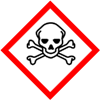| Anmol Chemicals is the pioneer manufacturers of Phenylmercuric Nitrate USP NF BP Ph Eur Grade, Pharmaceutical Excipients Fragrance & Flavor chemicals in India. We supply Halal and Kosher Phenylmercuric Nitrate made in an ISO9001, ISO22000 (FSSC22000) cGMP and GLP certified facility. Our group has several manufacturing facilities spread across the world, supported by toll manufacturers and representatives in UAE, Europe, Africa, USA, China and has several associated manufacturing facilities spread across India. All the Information on Applications, Uses and Technology on Manufacture of Phenylmercuric Nitrate is in these pages. |
| The units have one or more of the certifications like FDA GMP, ISO 9001, ISO 22000, HACCP, REACH, Kosher & Halal |
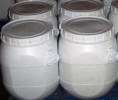
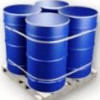
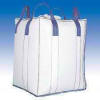
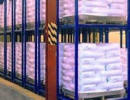
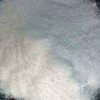
Phenylmercuric Nitrate SDS of Manufacturers
Phenylmercuric Nitrate Specifications of Manufacturers
Phenyl Mercuric Nitrate SDS, Safety Data Sheet
Material Safety Data Sheet
Section 1. Product Information
Product Name & Other Names: Phenyl mercuric nitrate, Mercury phenyl nitrate.
CAS No.: 8003-05-2
Chemical Formula: C6H5HgNO3·C6H5HgOH
Molecular Weight: 634.40
Relevant uses and uses advised against (if any): Industrial Manufacturing.
Section 2: Hazards Identification
GHS, Globally Harmonized System Classification in accordance with 29 CFR 1910
Classification according to Regulation (EC) No 1272/2008
Acute toxicity, Oral (Category 3), H301
Skin corrosion/irritation Category 1A, B, C H314
Specific target organ toxicity, repeated exposure Category 1, H372
Chronic aquatic toxicity (Category 2), H411
Labeling according to GHS & Regulation (EC) No 1272/2008
GHS Label Elements  Marine Pollutant |
GHS Label Elements |
GHS Label Elements |
GHS Label Elements |
Signal Words: Danger
Hazard statements:
H301 Toxic if swallowed.
H314 Causes severe skin burns and eye damage.
H372 Causes damage to organs through prolonged or repeated exposure.
H411 Toxic to aquatic life with long lasting effects.
Precautionary statements:
P260: Do not breathe dust/fume/gas/mist/vapors/spray.
P264: Wash … thoroughly after handling.
P270: Do not eat, drink or smoke when using this product.
P271: Use only outdoors or in a well-ventilated area.
P272: Contaminated work clothing should not be allowed out of the workplace.
P273: Avoid release to the environment.
P280: Wear protective gloves/protective clothing/eye protection/face protection.
P314: Get medical advice/attention if you feel unwell.
P330: Rinse mouth.
P301+310: IF SWALLOWED: Immediately call a POISON CENTER or doctor/physician.
P303+361+353: IF ON SKIN (or hair): Remove/Take off immediately all contaminated clothing. Rinse skin with water/shower.
P333+313: If skin irritation or a rash occurs: Get medical advice/attention.
P304+340: IF INHALED: Remove victim to fresh air and keep at rest in a position comfortable for breathing.
P391: Collect spillage.
P405: Store locked up.
P403+233: Store in a well-ventilated place. Keep container tightly closed.
P501: Dispose of contents/container in accordance with local/regional/national/international regulation.
Classification according to EU Directives 67/548/EEC or 1999/45/EC:
Hazard Symbols:
N = Dangerous for the environment
T+ = Very toxic
C = Corrosive
Risk Phrases:
R25 Toxic if swallowed.
R34 Causes burns.
R41 Risk of serious damage to eyes.
R48 Danger of serious damage to health by prolonged exposure.
R51/53 = Toxic to aquatic organisms, may cause long-term adverse effects in the aquatic environment.
Section 3: Composition and Information on Ingredients
Product Name & Other Names: Phenyl mercuric nitrate, Mercury phenyl nitrate.
CAS No.: 8003-05-2
Section 4. First Aid & Procedure
Always get medical attention after the first aid is over.
Ingestion: Never give anything by mouth to an unconscious person. Get medical attention.
Skin: Immediately flush skin with plenty of water for at least 15 minutes. Remove and wash contaminated clothing and shoes before reuse. Get medical attention if irritation develops.
Eyes: Immediately flush eyes with plenty of water for 15 minutes, occasionally lifting upper and lower eyelids. Hold eyelids apart during irrigation. Get medical attention.
Inhalation: Remove person to fresh air. If breathing is difficult, give oxygen. If not breathing administer artificial respiration. Get medical attention.
Section 5. Fire Fighting Measures
Fire/Explosion: Not considered to be a fire and explosion hazard.
Extinguishing Medium: Water spray, alcohol-resistant foam, dry chemical or carbon dioxide.
Special hazards arising from the substance/ mixture: Mercury oxides, nitrogen oxides, carbon oxides and fumes.
Fire Fighting Instructions: Use suitable protective equipment for surrounding fire.
Special Information: In the event of a fire, wear full protective clothing and NIOSH-approved self-contained breathing apparatus with full face piece operated in the pressure demand or other positive pressure mode. At high temperatures under fire conditions, it may produce toxic or irritating fumes.
Section 6. Spills and Disposals
Personal precautions, protective equipment and emergency procedures: Avoid breathing dust/fumes/gas/mist/vapors/spray. Use individual protective equipment (waterproof boots, suitable protective clothing, safety glasses, etc.). Restrict unprotected personnel from the area. Prevent any contact with hot surfaces. Do not approach facing the wind. Do not touch the spilled material.
Environmental precautions: Do not let the product enter drains, soil or water sources.
Methods and materials used for containment Cleanup procedures and Storage: Contain spilled material. Avoid dust formation. Avoid breathing vapors, mist or dust. Cover with an inert, non-combustible absorbent material, (e.g. sand, earth, diatomaceous earth, vermiculite). Vacuum or sweep-up and remove to an approved disposal container. Use clean non-sparking tools to collect material and place it into loosely covered plastic containers for later disposal.
Section 7. Handling and Storage
Precautions for safe handling: Apply according to good manufacturing and industrial hygiene practices. Ensure proper ventilation. Wash thoroughly after handling. Do not drink, eat or smoke while handling. Avoid contact with skin, eyes and clothing. Minimize dust generation. Avoid breathing dust/fumes/gas/mist/vapors/spray. Avoid contact with eyes, skin, and clothing. Keep container tightly closed. Avoid ingestion and inhalation. Avoid prolonged or repeated exposure. Use individual protective equipment (waterproof boots, suitable protective clothing, safety glasses, etc.). Prevent any contact with hot surfaces.
Conditions for safe storage, including any incompatibilities: Store in cool, dry and ventilated area away from heat sources and protected from sunlight in tightly closed original container. Keep air contact to a minimum. Do not leave the material container open. Store protected from heat, sparks and ignition sources and incompatible materials. Avoid contact with skin and eyes. Avoid inhalation of dust/mist/vapor. Do not store with incompatible materials like strong acids and strong oxidizing agents.
Section 8. Exposure Controls & Personal Protection
Exposure Limits for Phenyl Mercuric Nitrate:
USA. NIOSH Recommended Exposure Limits: 0.05mg/m3 TWA.
Engineering Controls: Use adequate exhaust ventilation to keep airborne concentrations below the allowable exposure limit.
Ventilation System: A system of local and/or general exhaust is recommended to keep employee exposures as low as possible. Local exhaust ventilation is generally preferred because it can control the emissions of the contaminant at its source, preventing dispersion of it into the general work area.
Personal Respirators (NIOSH Approved): For conditions of use where exposure to dust or mist is apparent and engineering controls are not feasible, a particulate respirator may be worn. For emergencies or instances where the exposure levels are not known, use a full-face positive-pressure, air-supplied respirator.
Skin Protection: Wear protective gloves and clean body-covering clothing.
Eye Protection: Use chemical safety goggles and/or full face shield where dusting or splashing of solutions is possible. Maintain eye wash fountain and quick-drench facilities in work area.
Other Control Measures: Maintain good housekeeping in work area. Dust deposits on floors and other surfaces may pick up moisture and cause the surfaces to become slippery and present safety hazards. Handle in accordance with good industrial hygiene and safety practice.
Section 9. Physical & Chemical Data
Physical State: Phenyl Mercuric Nitrate is powdered solid
Appearance: Off-white Solid.
Odor: Not available.
Odor threshold: Not available.
pH: Not available.
Relative density: Not available.
Melting point/freezing point: Melting point/range: 175 - 185C
Initial boiling point and boiling range: Not available.
Flash point: Not available.
Auto-ignition temperature: Not available.
Decomposition temperature: Not available.
Upper/lower flammability or explosive limits: Not available.
Vapor pressure: Not available.
Vapor density: Not available.
Evaporation rate: Not available.
Flammability (solid, gas): Not available.
Partition coefficient: n-octanol/water: Not available.
Solubility(ies): Not available.
Viscosity: Not available.
Section 10. Stability and Reactivity
Chemical Stability: Phenyl Mercuric Nitrate is stable under normal temperatures and pressures.
Incompatibility (Materials to Avoid): Strong acids and strong oxidizing agents.
Conditions to Avoid: Incompatible materials, exposure to moist air or water, excessive heat.
Hazardous Decomposition Products: Mercury oxides, nitrogen oxides, carbon oxides and fumes.
Hazardous Polymerization: Will not occur.
Section 11. Toxicological Information
Toxicity to Animals: LD50 Oral - Rat - 56 mg/kg.
Carcinogenicity: Not listed as a carcinogen by NTP, OSHA and IARC.
Mutagenic Effects: Not available.
Developmental Toxicity: Not available.
Reproductive Effects: No information available.
Section 12. Ecological Information
Toxicity to fish: Not available
Results of PBT and vPvB assessment: This substance/mixture contains no components considered to be either persistent, bioaccumulative and toxic (PBT), or very persistent and very bioaccumulative (vPvB) at levels of 0.1% or higher.
Section 13. Disposal Suggestions
Dispose of in accordance with all applicable local, state and federal regulations at an approved waste disposal facility.
Section 14. Transport and Label Information
DOT USA, TDG Canada & ADR/RID Europe:
UN-No UN 1895
Proper Shipping Name: Phenylmercuric Nitrate
Hazard Class 6.1; Packing Group II
IMDG/IMO
UN-No UN 1895
Proper Shipping Name: Phenylmercuric Nitrate
Hazard Class 6.1; Packing Group II
IATA:
UN-No UN 1895
Proper Shipping Name: Phenylmercuric Nitrate
Hazard Class 6.1; Packing Group II
Section 15. Regulatory Information
USA:
SARA 311/312 Hazards: See section 2.
California Prop. 65 Components: WARNING: This product contains a chemical known to the State of California to cause birth defects or other reproductive harm. CAS-No.: 8003-05-2
Section 16. Other Information
European Labeling in Accordance with EC Directives:
H300 Fatal if swallowed.
H314 Causes severe skin burns and eye damage.
H372 Causes damage to organs through prolonged or repeated exposure.
H410 Very toxic to aquatic life with long lasting effects.
DISCLAIMER: The information and recommendations set forth herein (hereinafter "Information") are presented in good faith and believed correct as of the date hereof. It is compiled from various sources and it is not necessarily all inclusive nor fully adequate in every circumstance. In addition, these suggestions should not be confused with nor followed in violation of applicable laws, regulations, rules or insurance requirements applicable.This Phenylmercuric Nitrate SDS sheet is intended only as a guide to the appropriate precautionary handling of the material by a properly trained person using this product. Individuals receiving the information must exercise their independent judgment in determining its appropriateness for a particular purpose.
Phenylmercuric Nitrate USP NF BP Ph Eur Grade Manufacturers
Anmol Chemicals
S-8, SARIFA MANSION, 2ND FLANK ROAD, CHINCHBUNDER, MUMBAI 400009, INDIA
TEL: (OFFICE) 91-22-23770100, 23726950, 23774610, 23723564. FAX: 91-22-23728264
e-mail: anmolc@mtnl.net.in

Exports to USA, Canada, UAE, Dubai, South Africa, Tanzania, Kenya, Nigeria, Egypt, Uganda, Turkey, Mexico, Brazil, Chile, Argentina, Europe Netherlands, Italy, Spain, Germany, Portugal, France, Malaysia, Indonesia, Thailand, Slovak, Korea, Japan, etc.
Copyright and Usual Disclaimer is Applicable. 12 January, 2022
Barter
I do not bow down at your door
I do not bargain for booty
Your promise of the heaven does not lure me
Your hell-fire does not scare me
I do not even know the proper method of prayer
I do not offer any thing to you
Ages have gone by and I have not seen you my lord
Yet my love for you keeps waiting for you
